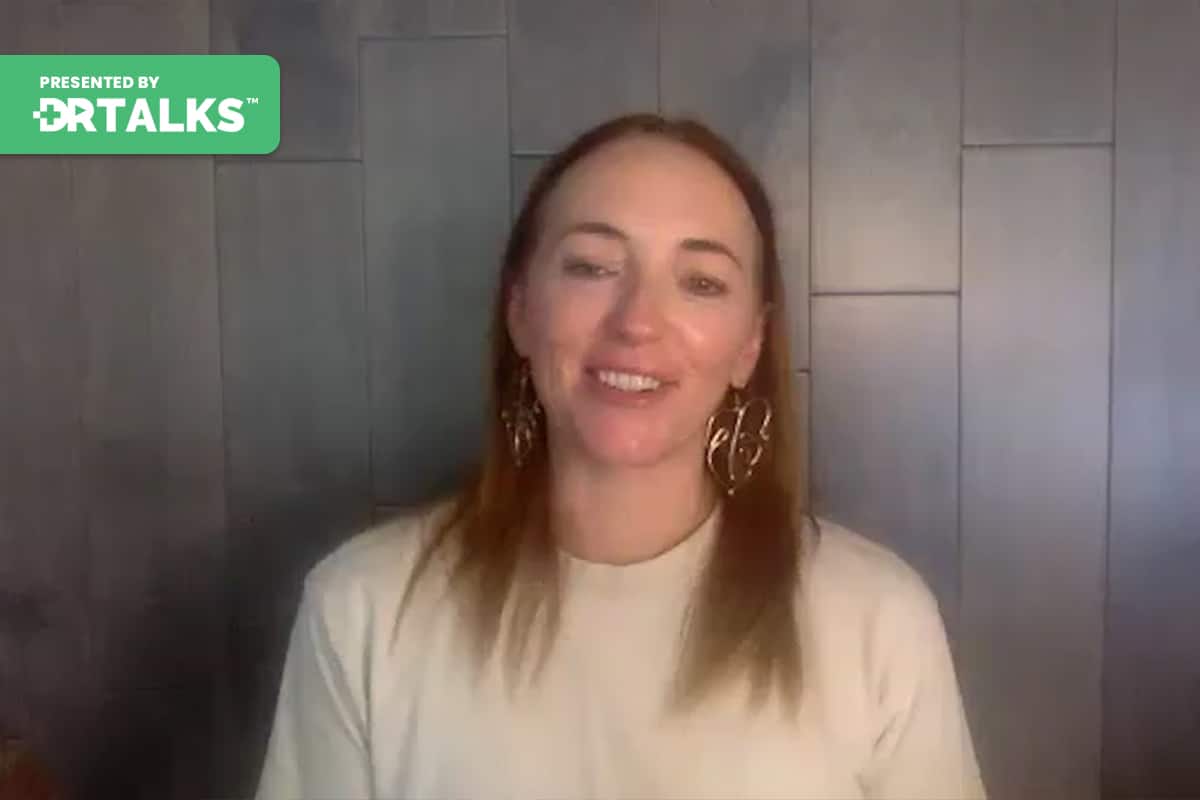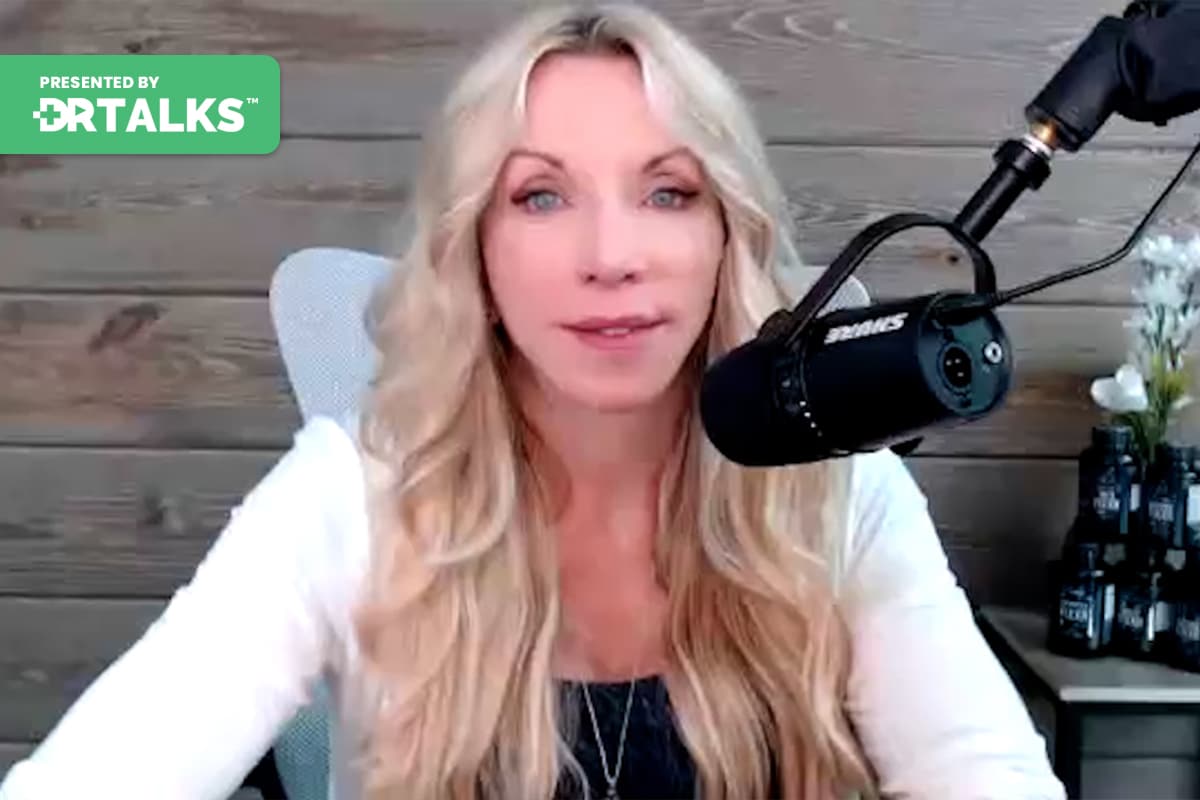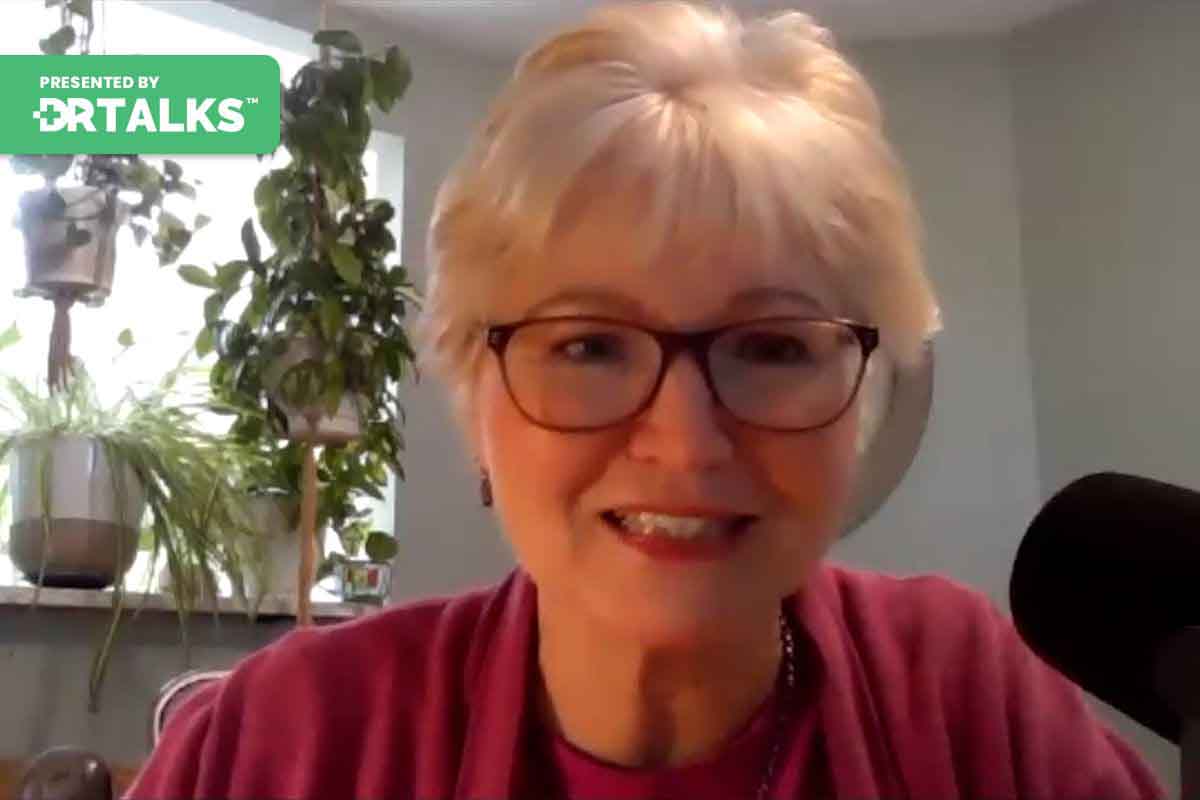Join the discussion below

Dr. Diane Mueller is the founder of My Libido Doc, an online community dedicated to helping women reclaim their desire. My Libido Doc provides education, community and health care services for women. Alongside her double doctorate in Naturopathic Medicine and Acupuncture, Dr. Diane extensively researches libido, pleasure and women's health... Read More

Dr. Soum Rakshit is the Co-Founder & CEO of MysteryVibe. He did his PhD in Biomedical Engineering and created a startup in eye recognition which was acquired by a US defence company. He then spent 7 years in management consulting on large technology projects. In 2014 Soum started MysteryVibe to... Read More
- Discover the role of approved vibrators in addressing and reversing sexual dysfunction conditions
- Understand the safety, ease of use, and effectiveness of vibratory devices for enhancing self-awareness
- Reignite the spark in your relationship and bring back mystery and excitement to your sex life
- This video is part of the Solving Sexual Dysfunction Summit
Related Topics
Aging, Chronic Illness, Emotional Health, Mindset, Relationships, Sexual Health, Womens HealthDiane Mueller, ND, DAOM, LAc
Hey, everybody. Welcome back to another interview on our Sexual Dysfunction Summit. I am your co-host, Dr. Diane, and I am looking forward to this next interview. This is with the co-founder and CEO of one of our sponsors, MysteryVibe, who produces amazing sex toy vibrators but also medical devices that are designed to help you heal from so many different types of sexual dysfunctions as well as provide a lot of pleasure. Thank you for all your support. Thank you for being here. Thank you for speaking with me today, Soum.
Soumyadip Rakshit, PhD
Thank you so much for having me.
Diane Mueller, ND, DAOM, LAc
Let us dive into this. Tell us a little bit about it, because the products I’ve used from your company are amazing. We talk about them throughout the summer. I’ve used them, and they are so unique compared to what else is on the market. We are going to dive into a lot of different things, some of the research, and some of the different types of things you have seen healed by using these devices. But let us start with how you guys came up with these products. What was the initial vision?
Soumyadip Rakshit, PhD
Just to provide some context, my background is biomedical engineering. I worked in ophthalmology for my Ph.D. 20 years ago. And after that, I always wanted to stay in biomedical even after I left academia, after a postdoc. The discussion that kept coming up was about major life events and the impact they have, like childbirth and pain after childbirth, menopause, dryness after that, prostate cancer, and erectile dysfunction after that. the very common things that every woman will have during menopause; I mean, it is just inevitable. There’s nothing special about it. Nothing. It is not an illness. It is not odd yet. It is not talked about enough. The issues that it can lead to are not addressed or even known by most people. The thing that we, as the founding members, thought of is that if we wanted to do something in biomedical again, we would love to do it in an area that affects all of us personally and the people whom we know and have the biggest gap where the least amount of work, education, and discussion is happening. That is how we ended up starting MysteryVibe. The thinking was, How do you bring mystery back into a relationship after something major like childbirth or menopause happens? We started ten years ago, and the thinking behind the devices was: can we recreate what works in a clinical setting? For example, in pelvic floor therapy and pelvic pain, the key to that even now is two fingers. Please use two fingers to reach the areas that need massage and address the pain, or it is not tissues, and what you have in the crescendo is exactly that.
The dimensions are two fingers with two fingers in-depth and much longer so that the inpatient or doctor can use it. very precisely, it bends in six joins to allow it to be very flexible, and the vibration frequencies are driven by existing research such as 100 hertz, which is clinically proven to help with sexual dysfunction. What it does is simply help with blood flow, and the blood flow helps with pain relief, arousal, etc. Fundamentally, it is quite simple because vibration is one of those areas that has been the subject of a lot of research for over 100 years. because vibrators have been used for sexual health for a long time, and that is the reason we picked that area. There are other areas like infrared and microcurrent, which are like dental machines; there are other areas as well, that are valid, but the area of vibration has the maximum longevity of research. We picked out the frequencies that are already clinically proven and 100 hubs. Then I created and custom-designed everything in our labs. We make our motors; we make our materials and composites. These are malleable materials, electronics, and silicone, which adapt to different body parts. It does not matter. Your gender orientation—all of that is irrelevant. All we care about is being very personalized, where it will fit different penis diameters, flaccid and erect, and interfere with different vagina shapes, labia shapes, prostate chips, etc.
Diane Mueller, ND, DAOM, LAc
Yep. I think that is.
Soumyadip Rakshit, PhD
The key is yes, exactly. That is the key thing in our research, and that is why we have spent all of our time the last ten years on materials science—how we create materials that, as you can see, will bend and hold their shape and be incredibly robust. You can use it for years and years and bend it as many times as you want. It will never break. That is the fundamental principle of all of our devices. That’s a new tool, which is a different material stretched like bubblegum Poco, a mini version of crescendo molto, which is for the rectum and reaching the prostate with all different technologies, different devices, and different purposes. But fundamentally, the same thing is malleable.
Diane Mueller, ND, DAOM, LAc
Yes. Thank you. I appreciate also knowing I did not realize that the level of research you guys put into the frequency that it was, that the research is down to that level. I have not heard of another company doing that, so I appreciate that. So from the standpoint of research, what are the different types of conditions that you guys have studied with the use of these different devices and have seen impressive clinical results? Can you talk about the different conditions?
Soumyadip Rakshit, PhD
The four that are already published, so all of these take years. The four have already been published in the Journal of Sexual Medicine. The first one is genital pelvic pain, which is the main topic after childbirth. There was a 5-fold improvement in the pain score within 12 weeks, and that is expected. The reason is that all we were doing was recreating what already worked. The patients tried the device three times a week for 12 weeks, and by the end of 12 weeks, most of them were almost pain-free. That is what should be the case because pelvic pain after childbirth should be addressable with BT. There is no reason, or there is hardly any reason; why regular? The key is yes, exactly. That is the key thing in our research, and that is why we have spent all of our time the last ten years on materials science—how we create materials that, as you can see, will bend and hold their shape and be incredibly robust. You can use it for years and years and bend it as many times as you want. It will never break. That is the fundamental principle of all of our devices. That’s a new tool, which is a different material stretched like bubblegum poco, a mini version of crescendo molto, which is for the rectum and reaching the prostate with all different technologies, different devices, and different purposes. But fundamentally, the same thing is malleable. A certain amount of time should not address that either. That is the very exciting reason, and it proved that there was a very cost-effective and time-effective solution that made pelvic floor therapy accessible because the biggest challenge for moms after, like with a one-month-old baby, is that time is simply not there. the time it takes, first you have to find a PT nearby, which isn’t always the case.
Depending on where you live, the body has to have time. The third is that you have to have time. Time is the biggest challenge. On top of that, if it is not reimbursed, then it becomes very expensive. If you have three sessions for 12 weeks, that is 36 sessions. If it is, say, $300, we are talking about like $10,000. That’s a lot of money. The clinical study, in that sense, proved what the design is, which is what the PT already knew it would do, which is why they designed it that way, but it made it eligible for FSA in D.C. What that meant is that now, when people buy devices, they can use them in seconds. It is partly discounted. also allowed us to be on the ICD ten codes, which means they can be partly reimbursed as well. That was the key thing, as was the credibility, and larger hospitals like the Mayo Clinic recommend that products from larger hospitals require a certain level of clinical evidence in journals that they trust. Yes, it was a very esteemed one in our area, too.
That was our first study. Then the second study was on FSA ads for female sexual arousal disorder, a key element, especially during or after menopause. There was a 2x improvement in FSA 5, which is the women’s sexual function index. I think that was a five-week period that they ran it. The second significant area that can affect anyone at any age becomes more and more prevalent with aging. The third study was on erectile dysfunction after cancer, which is a very, very common thing that happens in men, whether it is colorectal cancer, breast cancer, or just general cancer anywhere, but radiotherapy can lead to it. There is a big chunk of that. But then the food study was even more fascinating, from psychogenic erectile dysfunction to erectile dysfunction, which is purely psychological and like stress- or anxiety-related
The worry about performing the oversaturation upon consumption is influenced by the amount of work to do, etc., and that is 40% of all erectile dysfunction cases. The biggest proportion, and so what was exciting was not just the significant increase from severity to mildly at the average level, but for many of the patients, they got their confidence back that they did not have it anymore, so they did not need the aid or the helper anymore by the end of the study because often all they need is that confidence again that they can have good erections when they need them. Right when they want them. That was exciting, then. Those are the published ones, and we have around ten that are running. For example, a long study happening in the NHS in the UK is on vulvodynia with Poco. It has been running for three years and should finish next year. One study run by a charity in Berlin is on post-breast cancer dryness and arousal disorder, where patients have recovered from cancer but have had a lot of chemotherapy. They are charities. They’re using a combination of specific erotic content and the vibrator to help with arousal now. that has been running for a few years. Then we have a couple of studies in Italy one on erectile dysfunction after prostate cancer and one on ejaculation, helping men ejaculate who either have difficulty because of aging or because of diabetes with nerve damage, or because of spinal injury or other reasons. ejaculation dysfunction and they are using our prostate stimulation device to go straight and similar. The ejaculation. that has been in the study. Then we have a study running in the UK at University College London, which is on mesh removal. when the pelvic floor mesh causes problems and they have to remove it. There is a big unit at UCL for that.
There’s a lot of pain afterward, and it is way more difficult to address that big pain after childbirth, and that is where they are using both crescendo and poco. Then in Holly Street in London, London Clinic, they are working on a couple of studies on erectile dysfunction from different causes, and yes, lots of studies are happening, but like these things go on for years, and I have to look up our records to see what started, where, and how many years ago, and check in now and then, like, how is everything going? But I have not heard from them for months now, sometimes for years.
Diane Mueller, ND, DAOM, LAc
Yes. Thank you so much. You started talking about how your vision was filling this gap. Between vulva pain and erectile dysfunction, post-childbirth, surgery, and colorectal, and all these different things that you are talking about, you guys are doing an amazing job of filling the gap. Now, I want to bring us a little bit to a standpoint of utility, meaning I’m thinking that where some of our audience might be wondering, one question they might be wondering is, let us say somebody has some pelvic pain or vulvodynia, for example, where are they being instructed when they are using one of these devices? In the studies, is it like they just use these devices in whatever way feels good, or are they finding areas that say they stimulate a little bit of pain and using them there? Can you walk us through the utility of that?
Soumyadip Rakshit, PhD
Yes, that is a good point. For pelvic pain, we have instructions written on PTs with diagrams. It is quite straightforward, and we still recommend they go for at least one session with a specialist, do it at home, and then go back in a few months. With arousal, it is far more nuanced and subjective. There isn’t any way to prescribe how to use it. What, especially with the studies, the doctors do is say a minimum amount of time and a minimum frequency per week, but they do not say where to use it because they say, Explore your body and see what you find arousing, comfortable, and not painful. That is why it is complicated with, PT; it is simpler again like all the pain is.
There are instructions with videos that explain exactly where to put the vibration, which is around the glance of the penis, how to hold it, how to vibrate it, and for how long, and then how to stimulate the perineum and the base of the penis. That is quite straightforward because there are only that many areas that have nerve endings that react to stimulation. With the prostate, it is again quite simple. It is more instruction on safety, comfort, and pain management. It is how slowly this should be inserted and when they should not try to push it beyond what they are comfortable with. It does depend on the topic, and arousal is the trickiest one. But pain is similar to artery arousal. Female sexual arousal is trickier because, with the erection, it is much simpler to pinpoint what to do. They do graphics and diagrams and sometimes videos, but where they cannot, they ask the users to set a minimum time to use at least this much time for this many days a week and see what works for them.
Diane Mueller, ND, DAOM, LAc
Yes, I love that, and I appreciate it within the context of the products as well as what you guys display on the website. You guys do such a great job of showing how to use these devices, giving examples around position and posture and those sorts of things, and using graphics that are very classy and elegant and very well done. great job to your graphic designers.
Soumyadip Rakshit, PhD
That is such an accidental thing, by the way. The reason we started doing that is that when we created Crescendo as the first device, we started getting emails from people saying, My partner and I or my partner used it this way, and we had never thought of that. I give you a very simple example of Tenuto on the front part of 2 to 3 vibrating motors, which are designed purely for erectile dysfunction. It helps with gland stimulation. The penis had stimulation. A lot of our users, often those who are 50 or older and, in most cases, their female partners who have menopause, are going to end up using the front of the unit on the labia. The front bit of the front bit is yes. The front bit, they put the front bit on labia. All of that. They had a 360, and it was very powerful. 360 vibrations all over the labia, and they said, Oh, this is very useful for us.
That led us to create a specific device called Legato just for Labia because we designed it to adapt. We had not thought of that, and users told us that was how they were using a device that was meant for something different. We thought, Oh, if it is useful, then we might as well make it. The same thing happened with Crescendo. They were using it for period pain by just bending it and placing it on their lower abdomen, just below the belly button. They were like, This is very effective. I think we did not design it for that. You have to hold it, but it is not convenient. We are making a sticky vibrator that is very slim, and you can wear your clothes on top and go to work. A lot of what happens is user feedback-driven. What we started doing early on—this happened within the first few years—was sketching them. I have a full-time designer in-house, and he started sketching them, and he said, We can just make them into a book. You can download the PDF, and you can also order a print.
The reason we made that into a print is that it comes as separate cards, and you can then take it to the bedroom and try new positions, and there are hundreds of things in there. We tried to make it very generic, like blue people or purple people, people you cannot tell the gender is, every orientation, just to make it very universal and very inclusive. This is from ten years ago when we started because that was the whole point. We do not think about it from a gender or orientation perspective. We think about it as how we can solve any significant health issues for whoever it is. For example, the multi-device, which is designed for prostatitis or prostate pain, was picked up by a clinic in Los Angeles that does gender reassignment surgeries, and they wanted to try it for vaginal opening. That is the beauty of letting it out there. Experts and sometimes users even figure out applications that we had never thought of.
Diane Mueller, ND, DAOM, LAc
Yes. You guys have done a good job of just making it very accessible. I think that leads me to where I think we should go next, which is also part of something you mentioned at the beginning around the vision, around giving people. I do not remember exactly the way you said it was something about giving people another way of playing when maybe they have been in a longer-term relationship, adding that I do not think you use the word novelty, but that is what I heard.
Soumyadip Rakshit, PhD
It’s mystery. And that is not in our thinking. It is from a very famous relationship coach in New York, Esther Perels. She came up with this concept in her 2012 TED Talk, and she said If you want to keep a long-term relationship exciting, keep the mystery in the bedroom. I watched that talk, and I thought, That is such a good point. Her example was to just go on a work trip for a week and come back, and you will want to spend more time with your partner than you spend 24/7 with him or her. So yes, that is where the mystery comes in. Then just the point around a long-term relationship where you do not necessarily have to have a sexual health issue like pain or erectile dysfunction or something. Just the fact that you have been together for a long time means you need to spice things up. That is where a big element of the product, ergonomics and aesthetics, came in. This is something that doctors we worked with in the early days told us: whatever you do, do not make it clinical-looking, because they have dealt with so many devices that are quite scary to look at, like steel dilators, and they struggle to convince their patients, one, to even accept it, but to continue using it. then it is very difficult to help. That is difficult for doctors who are patient but not enthusiastic. They said “You have to make them pretty. You have to make them giftable; you have to make them sexy.”
This is sexual health. This is not like the look and feel matter. Also, most people said that, if you think of the 80/20 rule, 80% of people who struggle with some sexual issues should never go to a doctor. They just suffer in silence. They might search online for some solutions in terms of privacy, but they do not want to talk to anyone. That is a huge problem. That means if we built something clinical and only sold it via hospitals, we would never reach 30%. We’ve reached the 20%, and certainly, the 20% is often people who have waited years and years before they decided, they need to go see a specialist. That is why we created two websites. We have another website on my mysexmd, that is purely medical, which was originally the plan: to build out mysexmd. The idea was, Your sex doctor, mysexmd. So we have mysexmd as a common set of medical sites where the doctors do not advertise because that is a consumer-facing site.
But MysteryVibe became the more well-known site, which is simply the device that we make anyway. But with a lot of content on education, that is what MysteryVibe is. This is the medical device but with tons and tons of, like, thousands of pieces of content that talk about anything from period pain to menopause to prostate cancer, threesomes to audio porn, to everything you can imagine in sexual health, wellness, and pleasure. Because our content is driven by questions that people ask, over the past ten years, we have just had tons of questions, and even questions like, “How do I have a threesome with my partner?” That is a very valid question when it comes to a mystery in the bedroom because that might be what someone as a couple is looking for, and it is not for us to tell people whether to do that or not. It is for us to find out what an easy way to talk about it is. What is the conversation starter, as those are what people are looking for? How do you start this conversation? How do you do it safely? If you want to explore a sex party, for example, how do you find them?
How do they stay safe? What are its etiquettes? What we do is, instead of trying to make up stuff for research, we just reach out to people who we know are experts and ask them to write it. whether it is medical stuff for doctors or founders of, like female-led sex clubs, to write about the thinking behind it and how they do it. The mischief I see from that brand perspective is that we are not here to judge. We are not here to tell you what to do. We’re here to simply provide actionable knowledge. Things that you can do something with. step-by-step guide on how to rekindle sex in the bedroom when it has disappeared. Step by step, I mean like bullet points, like setting the room temperature to 25 degrees Celsius, downloading this playlist, and getting this massage oil, massage each other. I do not even think of penetrative sex to start with, because that is where the anxiety comes in. If you have not had sex for a while, like with all kinds of stuff, just try to be helpful and actionable. Then, if they buy our devices as a result of that, that is the cherry on top. That’s nice to have. But the goal is very much to have a triad system where 99% of people who come to read will go somewhere else for their solution or purchase, and 1% may buy a product. The MysteryVibe is mostly content.
Diane Mueller, ND, DAOM, LAc
Yes. I just appreciate so much what you said. I just resonate so well with that. I think that is a huge reason we are doing the summit, which is similar to what you have said. It is about teaching people how to have these conversations that do not have to be difficult, but they are difficult because we’ve never been talking as a society about how to do them. Just like any new scenario in life, if we do not have a roadmap, if we’ve never been shown how to communicate in certain ways and how to have discussions that might be tender to certain people, then how is somebody going to get to know? I appreciate that and what you are doing as far as bringing more novelty into long-term relationships, whether it is through exploring different communication, through exploring different things like sex parties like you are talking about, or just as simple as, “Hey, this very simple nuance that you are going to do from a pastoral change, intimately in the bedroom.” It is so wonderful. Do you feel that, from the standpoint of just letting people know about everything that MysteryVibe offers, is there anything that we have not covered that you think is important to get out there in your message?
Soumyadip Rakshit, PhD
No. Yes. Sex Ed. Boy! That’s massive. It is far beyond reading blog posts. It is not something we have yet gotten into. How do we reach out to schools? How do we teach these teenagers about pleasure and consent and the context of erotic videos like that? But just as a message around sexual wellness, I think that is an area that parents need to think about for their kids. Educational institutions and governments need to think about providing context to porn to a teenager because it is safe to assume that they will figure out a way to watch it, and putting bounds on it is not the solution. The solution is to provide context, just like you would watch a Harry Potter or Iron Man movie with your kid and tell them that it is just fantasy, that it is beautiful, and that it is fun, but you do not watch it and try to jump off a window and try to fly because that would be very silly. The kids know that, like a 15-year-old. They know that; that is very silly. Why would you even think that? But this is because of the context and because they were told that this is how computer graphics work and this is great and fun to watch, but it is just all that is not real.
The problem is with porn; parents are not involved at all. Even if they know they would simply turn a blind eye, they just do not want it, and teachers do the same. Now some places are different, like in Scandinavia, where they do proper sex education. They’d explain porn in the context of fantasy in mainstream movies, and they would explain exactly this, like both most porn and most movies they watch are made in Hollywood, and there is no difference. There are cameramen, directors, actors, and actresses doing lots of fantasy stuff, and it is not real. When you know that, they will also explain, like the technicalities of porn and all the things they do to test direct for an R and all the ways they do the shots. then they understand the technicality of it. You would understand computer graphics are used to make Iron Man fly, and then the kids are like, Okay, so this is the same thing, Iron Man and a porn star. then, and then they get it right. They’re like, Okay, it is still fun to watch, but please, I do not expect real life to be like that.
that saves them a lot of pain later on. It is something as simple as that. It is probably just one one-hour lecture, and that is it. We just need more of that everywhere. Whoever does it, it does not matter. But kids just need to listen to that, like hearing that small piece, which would significantly change their relationships, especially in the early years. That is a huge piece that we do not like. We talked about it, but we have not been able to do anything about it yet. We have not gotten involved with governance, education, or parents; it is something I talk about because I want someone to do it.
Diane Mueller, ND, DAOM, LAc
Yes, I’m glad you brought that up, because that is not something we’ve talked about throughout these interviews for this summit. It is good to know Scandinavia as a model that has been effective that way because I do the porn. It is something we’ve talked about at the summit, but not from a SexEd perspective. But I do think you have completely nailed it where there are these assumptions, just like you are talking about Iron Man. There’s this assumption that gets made out of it that can set people up on this trajectory of thinking that sex is supposed to look this way, be this way, and feel this way, and sometimes for the rest of their lives, they are still orienting to whatever those first images were. It sets people up on this trajectory that, if we could fix that from the beginning, could lead to a lot more personal and relational success. I support you on that. that mission. I see the value in the importance of that. Thank you so much for bringing that up. Thank you so much for being here and sponsoring the summit. Just as a reminder, you guys, we have more from Soum and MysteryVibe throughout the summit. You’ll see information about them, how to purchase their products, and how to find their educational information at mysteryvibe.com. You also see that in some speaker notes that we will have next to the profile for this particular interview. Thank you again. Thank you. From the bottom of my heart, it has been truly a pleasure to get to know you, your company, this mission, and this work. We appreciate you.
Soumyadip Rakshit, PhD
Thank you so much again for having me.
Diane Mueller, ND, DAOM, LAc
We’ll see you all in another interview very soon. Take care.
Downloads










